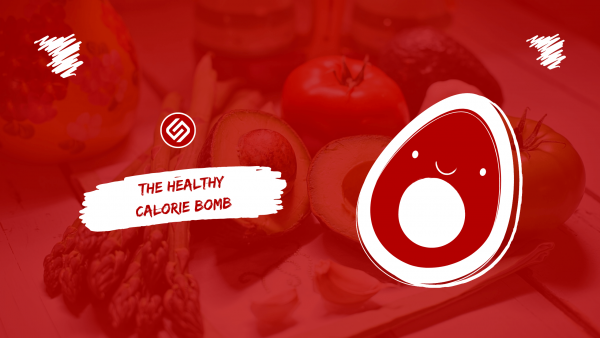While a few years ago the avocado was only available in selected shops or from a well-stocked greengrocer, today it is part of the standard range in almost every supermarket. But what exactly is the avocado? A fruit or vegetable? Or is it not considered a healthy food because of its high-fat content? How can you tell from the hard, rough skin whether the avocado is ripe? And how do you prepare them? I have the answers.

Healthy Despite Many Calories
There is hardly any sugar or fruit acid in it compared to the other fruits, at the same time it has a much higher nutrient content. In addition to carbohydrates, it also provides:
- Vitamin C
- Phosphorus
- Calcium
- Iron
On the other hand, the pulp of the so-called butter pear has by far the highest fat content of all known types of fruit and vegetables. So 100 grams of avocado pulp with a good 200 calories and about 25 grams of fat add up. However, these are mostly unsaturated fatty acids, which makes the avocado a valuable, healthy food despite the calories.
Avocado For Diabetes
It is often read that people with diabetes should avoid avocados from their diet. The reason for this is supposed to be the ingredient mannoheptulose because it inhibits the release of insulin. However, this is considered positive in specialist circles, since many diabetics have a relative excess of insulin, which can increase insulin resistance. When the fruit is consumed, the blood sugar level is hardly increased – avocados are therefore recommended for diabetes.
It is also said to be good for the heart and, thanks to its content of minerals such as iron, calcium, magnesium, and potassium, help to combat hypertension. Furthermore, according to a study, the fruit lowers the level of “bad” LDL cholesterol.
Avocados Are Berries
Although most people speak of the avocado fruit, the avocado belongs to the berry family. In Europe, avocados are still treated more like vegetables and are preferably consumed in salty dishes, such as spreads, in salads, or with salmon. In South America and Asia, however, avocados are also used for sweet dishes such as milkshakes or ice cream.
Recipes With Avocado
While the skin and core of the avocado are inedible, the pulp is very healthy. With its pleasant, nutty taste and a soft, almost creamy consistency, the flesh of the avocado is suggested in a variety of recipes. In the simplest form, the pulp is simply spread on a sandwich and salted.
The avocado is also popular in pureed form, as so-called guacamole, which is refined with garlic, lemon juice, salt, and pepper and is a welcome dip at parties. This recipe for avocado cream comes from Mexican cuisine but is also becoming increasingly popular.
Also as soup, salad, or in Japanese sushi, the avocado pampers the palate with its gentle taste. Since the pulp quickly turns brown in the air, a few sprinkles of lemon juice or vinegar should be added to the avocado. In addition, avocados should only be consumed raw, as a bitter taste develops when heated, which makes the entire food inedible.
Origin, And Cultivation
The avocado originally comes from southern Mexico but is now grown in almost all tropical and subtropical areas. It grows on the shrubby avocado tree, which can grow up to 20 meters high. The green, pear-shaped fruits naturally fall from the tree before they are ripe. Therefore, they are also picked in cultivation as soon as they have reached the size customary in the market.
Even in the supermarket or at the greengrocer, avocados are usually not immediately edible. Only after a few days do they reach perfect maturity, which can be recognized by the fact that the shell gives way slightly at the touch of a finger. To speed up the ripening process, you can wrap the avocados in the newspaper or store it with apples.
Recommended Readings: Clean Eating: Nutrition Plan for a Week
Avocado Oil For Dry Skin
Avocados are not only grown because of the fruit, but also because of the oil they extract, which has already been used by the Aztecs. The avocado oil pressed from the overripe fruits is relatively expensive and less important than edible oil, but more important in cosmetics.
Due to the valuable fats and vitamins contained in the avocado, its oil is particularly suitable for dry, rough skin. It is also absorbed quickly and can be spread well on the skin. Therefore avocado oil is used in many high-quality lotions, soaps, and creams. Avocado is also occasionally found in shampoos against dry hair.
More information on avocado’s nutrition facts and health benefits can be found (Here).









Leave a Reply